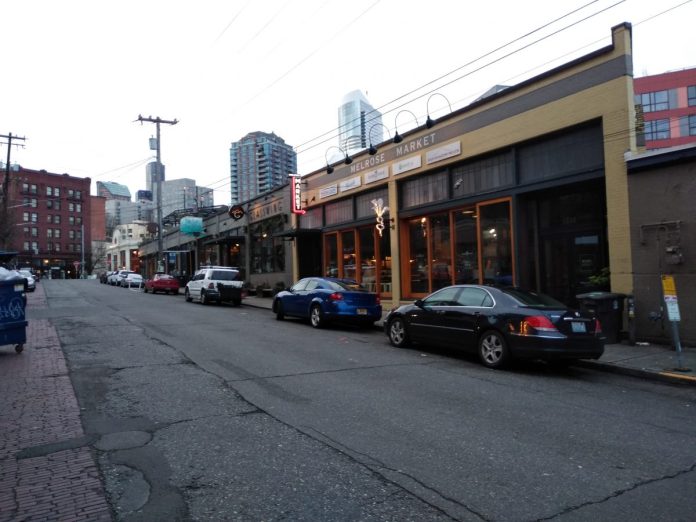Last month, the Seattle Department of Transportation (SDOT) released designs for street improvements on Melrose Avenue, on the very western edge of Capitol Hill and northern First Hill. The improvements are the product of a group of advocates who advanced a vision for the corridor that they called the Melrose Promenade. It culminated in a conceptual plan finalized in 2013, and a $3 million award for implementation was granted by the Puget Sound Regional Council in 2016. Now improvements are getting ready to hit the ground as early as this fall.
The concept plan is focused on transforming the corridor into an open space amenity, whereas SDOT’s latest designs are focused more on traditional basic mobility in the corridor. However, these improvements could lay the groundwork for more radical changes in the future. Or they could also become the entire extent of the improvements as other transportation projects vie for common funding sources.
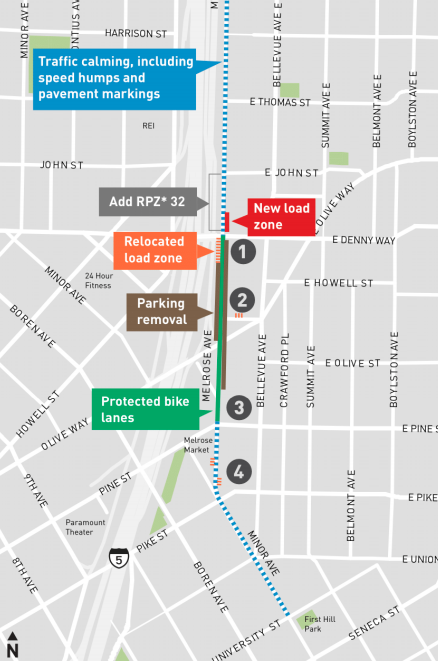
The Melrose Promenade project’s scope has always focused on three different segments of Melrose Avenue: the urban southern part around Pike and Pine Streets, the long overlook section north of Denny with a clear view over I-5, and a far northern segment focused on improving the state-owned trail north of Roy Street. The improvements here do not involve that third segment at all.
Between Pike and Pine: Future Pedestrian Street?
What would likely be Seattle’s largest raised intersection is planned at the intersection of Melrose Avenue and Pike Street, an area that is begging for pedestrianization like few others in the city. Last year, SDOT constructed a protected bike lane on either side of Pike Street, and so left turns across the bike lane onto Melrose were prohibited, but that restriction is frequently ignored. With the Starbucks Roastery as a big draw for foot traffic, conflicts are myriad between street users. SDOT’s plans show a raised intersection all the way from the crosswalk on Pike Street nearly 100 feet back behind the intersection with Minor Avenue. SDOT also plans to widen some of the sidewalks on the block.
A raised intersection that large could signal to people in vehicles that they are operating in shared space and that drivers should slow down, but ultimately conflicts will still be present. The area would function better without through traffic allowed, which would be less expensive than widening sidewalks and raising intersections. It’s disappointing that doesn’t appear to be in the cards now.
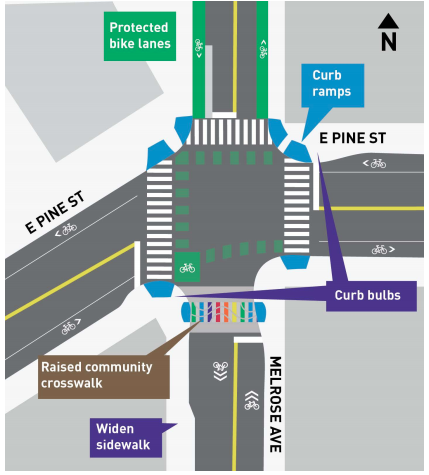
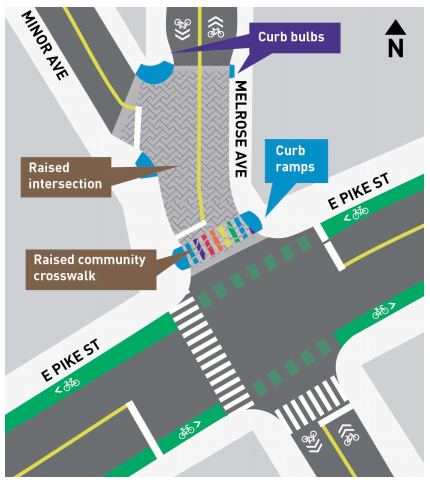
The Melrose Promenade concept plan envisions the block between Pike and Pine Streets as a festival street, with seating that can easily be moved into the right-of-way when street closures occur, with the curbs between the sidewalk and the street removed.
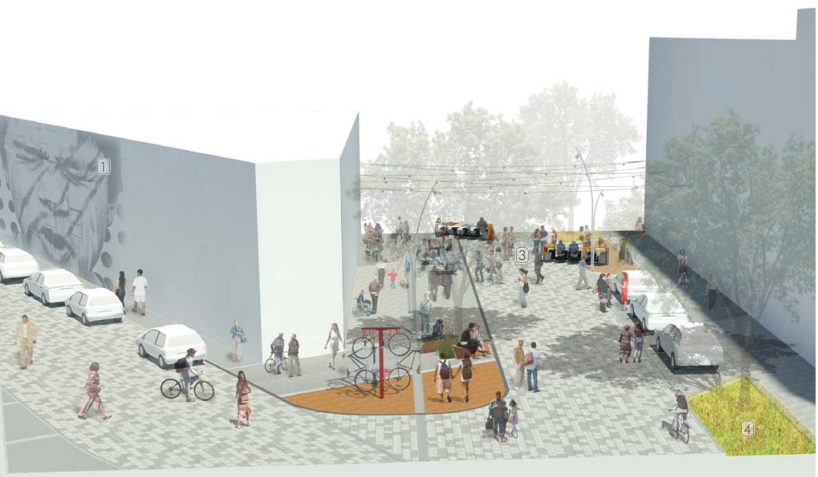
Protected Bike Lanes between Pine and Denny
North of that block, SDOT plans to install one-way protected bike lanes on either side of the street. This segment is actually designated as a neighborhood greenway on the Bicycle Master Plan, but bike lanes make much more sense in an area that is directly adjacent to numerous I-5 entrances.
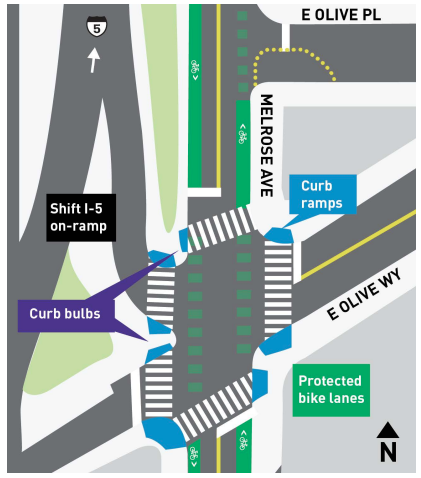
Parking will be removed on this stretch, and the intersection with E Olive Way will be modified to become more pedestrian friendly. At that intersection there is an entrance to I-5, and pedestrian crossings on the west side in front of the ramp are prohibited. This project would modify the ramp location slightly, add back a pedestrian crossing, and extend the curbs to narrow the travel lanes.
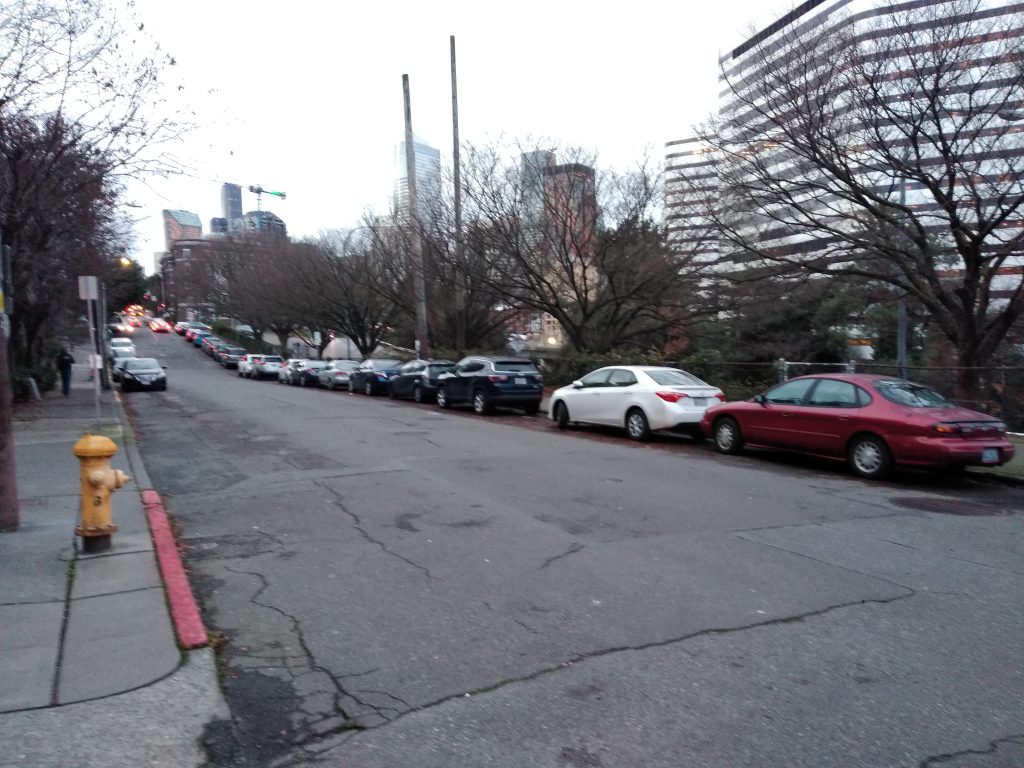
Dead End at Denny
The protected bike lanes do not continue north of Denny Way, which is envisioned as more of a neighborhood greenway. SDOT says they plan to add speed humps as well as “pavement markings” (read: sharrows). Crosswalks on the west side of the intersection at Denny will get curb bulbs; however, this is an intersection where drivers stop in the crosswalk on a constant basis as they wait in the queue for I-5.
The parking lane north of Denny on the I-5 side of Melrose, which only exists for one block between Denny and John Street, and is currently parallel parking, would be converted to back-in angle parking. It is this choice that most appears out-of-sync with the vision for the Melrose Promenade, and a truly baffling one. It will narrow the roadway on a segment where people on bikes are encountering drivers likely to be heading to the freeway.
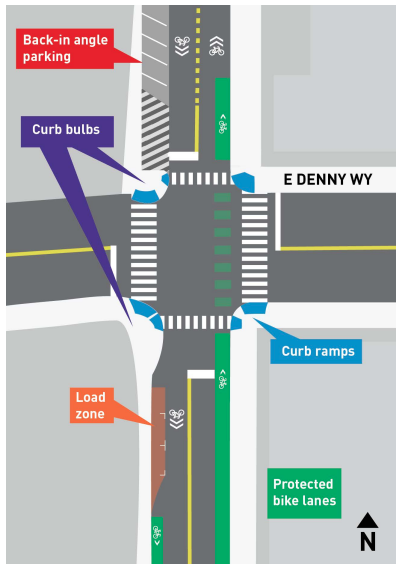
Due to the steep slopes of the cross streets connecting to the rest of Capitol Hill, the protected bike lanes in this project primarily provide utility for two types of users: those who are connecting all the way through the trail north of Roy Street to Lakeview Boulevard (where there are no protected bike lanes and frequent fast moving traffic), or those connecting with the relatively narrow sidewalk that exists on only one side of the Denny Way overpass over I-5.
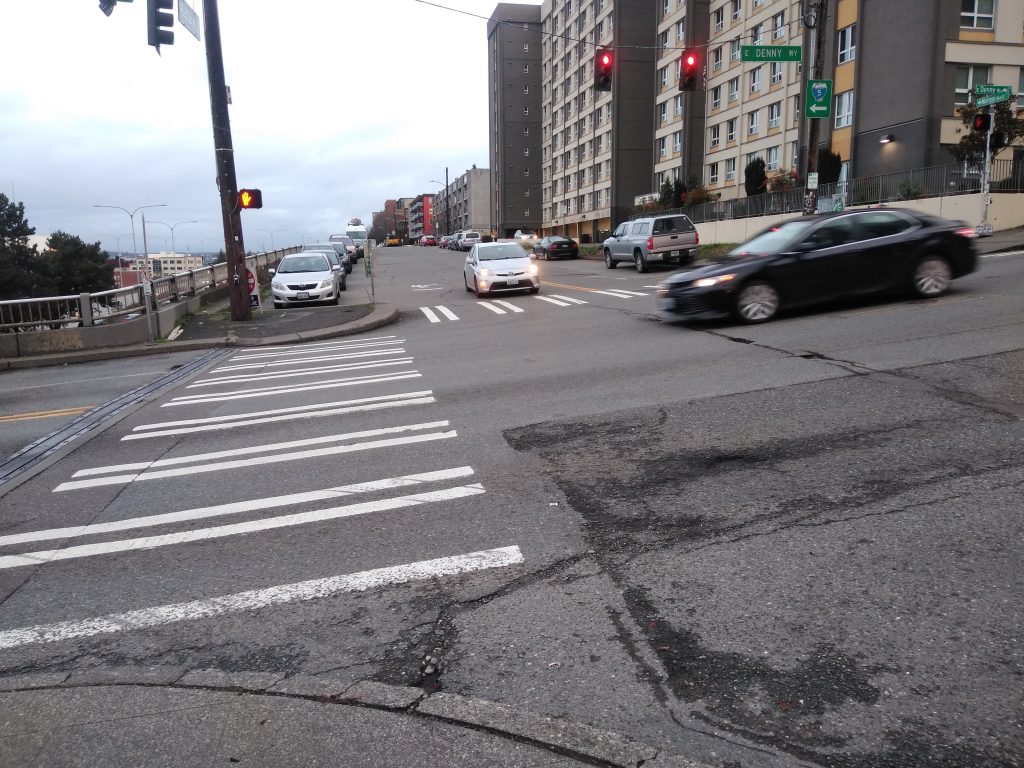
However, if there is going to be any bike connection between western Capitol Hill and South Lake Union, it will likely involve a connection with Denny Way. The I-5 overpass is badly in need of a makeover, though it’s hard to envision what that would look like now. These connections for people biking are a step at least.
Ultimately, while these plans are a pretty large distance away from the public space remodel that the Melrose Promenade concept had in mind for this underutilized corridor, any improvements here are welcome and should help further that vision. The more people are able to use this section to get around by walking, biking, or rolling through it, the higher the demand will be to complete the long-term vision. In the meantime, some of these improvements could make a huge difference making people walking, rolling, and biking safer.
Ryan Packer has been writing for The Urbanist since 2015, and currently reports full-time as Contributing Editor. Their beats are transportation, land use, public space, traffic safety, and obscure community meetings. Packer has also reported for other regional outlets including BikePortland, Seattle Met, and PubliCola. They live in the Capitol Hill neighborhood of Seattle.

